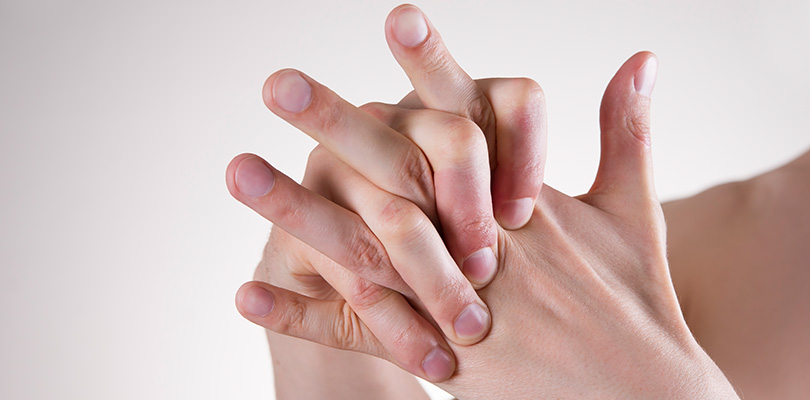Do I Need Physical Therapy?
You’ve had a fall, and your knee (or ankle) is painful. Maybe you suddenly have trouble climbing stairs. What should you do about it? Have you considered seeing a physical therapist?
The American Physical Therapy Association (APTA) states that a physical therapist is a trained and licensed medical professional with experience in diagnosing physical abnormalities, restoring physical function and mobility, maintaining physical function, and promoting physical activity and proper function.
Licensed physical therapists can be found in multiple healthcare settings including private practices, outpatient offices, hospitals, rehab centers, home health, nursing homes, sports and fitness settings, and schools.
Your doctor might suggest physical therapy if you’ve had an injury or illness that makes it hard to function in daily life.
A customized physical therapy program can help you return to your normal level of functioning. You might be encouraged to make activity and lifestyle changes – all to prevent further injury and improve quality of life.
Physical therapy is considered a conservative approach to managing problems like pain. Primary care doctors often refer patients to physical therapy at the first sign of a problem.
What to Expect During Physical Therapy
A physical therapist helps take care of patients in all phases of healing, from initial diagnosis through recovery. Doctors can refer patients to a physical therapist, but some patients undertake physical therapy on their own.
When you see a physical therapist, you will:
- Have a physical exam and evaluation, including evaluation of posture, movement, and flexibility, as well as muscle and joint motion.
- Get a clinical diagnosis, prognosis, plan of care, and outline of goals.
- Receive physical therapy treatment based on the therapist's evaluation and diagnosis.
- Receive recommendations on daily lifestyle changes that will help maintain the improvements.
Patients typically train with a physical therapist in exercises that they can do at home, to help them function more effectively.
Types of Physical Therapy
A variety of therapies can help with multiple conditions. These include:
- Orthopedic physical therapy is helpful for injuries to the muscles, bones, ligaments, and tendons. This therapy applies to medical conditions such as sprains, fractures, tendonitis, bursitis, and rehabilitation after orthopedic surgery.
- Geriatric physical therapy can help elderly patients with mobility and physical conditions like arthritis, osteoporosis, balance disorders, hip and joint replacement, incontinence, and Alzheimer’s disease. This therapy can help with movement, pain and physical fitness levels.
- Neurological physical therapy can help people with conditions such as brain injury, cerebral palsy, multiple sclerosis, Parkinson's disease, Alzheimer's disease, spinal cord injury, and stroke. Treatment is aimed at restoring limb function, reduce muscle atrophy, increase muscle strength and treat paralysis.
- Cardiovascular and pulmonary rehabilitation can benefit people with certain physical conditions or who are recovering from surgery. Physical endurance and stamina can benefit from treatment.
- Pediatric physical therapy is specifically for children - diagnosing and treating conditions that affect infants, children, and adolescents. This includes cerebral palsy, spina bifida, developmental delays, torticollis and other musculoskeletal conditions.
- Wound care therapy is physical therapy to ensure that a healing wound is receiving adequate oxygen and blood by way of improved circulation. Manual therapies, electric stimulation, and compression therapy can improve wound healing.
- Vestibular therapy aims to treat balance difficulties related to inner ear conditions. Vestibular physical therapy involves exercises and manual techniques to help patients regain balance and coordination.
- Decongestive therapy is helpful in draining accumulated fluid in patients with lymphedema and other conditions.
- Pelvic floor rehabilitation helps people with urinary or fecal incontinence, pelvic pain, and urinary urgency problems caused by injury or surgery.
- Sports massage therapy consists of specific components designed to cut down on sports-related injuries. It specifically alleviates muscle tension and inflammation post-event and provides a warm-up to loosen muscles for amateur and professional athletes pre-event.
Many people wonder if cracking your knuckles can cause arthritis, thankfully it does not. However, there still are a few reasons to try and stop the habit.
More Types of Physical Therapy
- Aquatic massage therapy (or water massage therapy) is a gentle, hands-on massage therapy treatment that takes advantage of the anti-gravity provided by a therapeutic pool. Some physicians often recommend aquatic therapy for people with a restricted range of motion from conditions such as severe arthritis or osteoarthritis, post-surgical injuries, pregnant women or newly post-pregnant women, and people with any type of nerve damage.
- Proprioceptive neuromuscular facilitation (or PNF) is an advanced type of flexibility therapy. PNF is built on a series of exercises that focus on stretching; first contracting then relaxing, stiff or painful muscles in the body. PNF is very effective when it comes to improving flexibility, strength and range of motion in a damaged or stiff muscle. It's often used to treat lower back, neck and shoulder pain associated with poor posture.
- Kinesiology helps those who suffer from any type of physical pain or injury. A kinesiologist can make recommendations about how to help the muscle heal by adapting lifestyle changes examples are proper posture, proper sitting and sleeping techniques and proper lifting. During a kinesiology session, the therapist will apply a gentle, light finger massage to various pressure points across the person's body, in order to relax and soothe affected muscles, tissues and joints.
- Positional release therapy is a form of complete body evaluation and treatment. Positional release therapy helps to reduce pain in the ligaments, tendons and muscles, decreases joint pain, helps with reflux, and helps with irritable bowel syndrome. This is achieved by decreasing muscles spasms, ligament and tendon tension, pain, swelling, joint hypomobility, and increasing strength and circulation.
- Strain/Counter strain techniques emphasize on the correction of abnormal muscle movements and placements. The gentle technique of strain/counter strain puts the individual in a comfortable position for approximately 90-seconds. During this time the patient's muscles will naturally reset to their proper positions.
- Neuromuscular integration and structural alignment, also commonly referred to as NISA, aims to stretch, loosen and soften the body's fibrous tissues that surround the muscles and organs in our bodies. This stretching and loosening is important in order to restore function and maintain muscle elasticity.
- Movement therapy is a holistic therapy approach. It consists of yoga’s physical, spiritual and philosophical framework combined with modern neurophysiological approaches to address the specific needs of each individual.
Types of Massage Therapy Used in Physical Therapy Treatment
- Muscle energy technique is based on the principle of reciprocal inhibition, a theory that explains that muscles on one side of a joint will always relax to accommodate the contraction of muscles on the other side of that joint when indirect pressure is applied.
- Myofascial release is a gentle therapy, consisting of a mixture of light stretching and massage work. Myofascial release is also a safe therapy that can be used as a preventative method or to promote the healing of an injured, stiff or painful muscle.
- Medical massage therapy is specifically designed for those individuals recovering from injury or surgery and need muscle rehabilitation. The goal of medical massage therapy is to use a series of manual therapy treatments to correct the affected areas of the muscle-skeletal system while reducing pain at the same time.
- Neuromuscular therapy is applied in various pressures by the therapist, using a combination of effleurage or gliding, petrissage or grasping, friction, muscle energy, and strain/counter-strain massage techniques.
- Soft tissue release therapy is a form of bodywork designed specifically around the area of neuromuscular therapy. Soft tissue release therapy focuses on increasing recovery rates of muscular injuries, fixing muscular imbalances, and relieving chronic pain.
- Nurse massage therapy is different from massages that are strictly focused on rest and relaxation, such as Swedish massage. Nurse massage therapy focuses on muscle strengthening and rehabilitation. It is used to help patients recover more quickly from injury and illness, while also providing relief from any pain or discomfort they may be experiencing during the healing period.
What Are the Benefits of Physical Therapy?
You might not like taking pain pills. And you’re probably not ready to leap into surgery right away. If your doctor advises you to try physical therapy first, that’s excellent.
The multiple benefits of physical therapy include:
Getting the Pain Under Control
Physical therapists use several techniques to relieve pain and restore muscle and joint function. This can help prevent pain from returning.
The therapeutic exercises and manual therapy techniques include joint and soft-tissue mobilization to restore joint movement, strength, and range of motion.
Soft-tissue mobilization therapy is a treatment for soft tissue injuries such as strains and sprains. Soft tissues are muscles, tendons, ligaments, cartilage, and other structures that support your organs and skeletal system.
Mobilization therapy is used to treat soft tissue injuries – including sprains, strains, tendonitis, bursitis and stress injuries. The therapist gently and very precisely coaxes joint motion limited by the amount of joint play.
A physical therapist also uses treatments such as ultrasound, taping or electrical stimulation to help relieve pain and restore muscle and joint function to reduce pain. Such therapies can also prevent pain from returning.
Avoiding Surgery
If ending the pain is the goal (and it often is) physical therapy can be beneficial. You may be able to avoid surgery if you give physical therapy a try.
You might heal from your injury, and get pain relief, with a physical therapist’s help. If your doctor still feels you will benefit from surgery, you will be in stronger shape thanks to the therapy. This can help you recover faster.
Improving mobility
If you have difficulty walking or standing, physical therapy can help. You will benefit from stretching and strengthening exercises.
You may need a cane or other assistive device, or special shoes to help you move with more stability.
Recovering from a stroke
Anyone who suffers a stroke will likely have some loss of function. If your gait or balance have been affected, you can regain strength and improve your walking ability with physical therapy.
Tips for Finding a Physical Therapist
Finding the right physical therapist involves your insurance company’s acceptance, a reason for treatment, and geographical location.
Insurance companies often have lists of physical therapy locations who participate in specific health plans. Other healthcare providers may have a list of therapists in the area whom they recommend.
Another way to find a physical therapist is to access the American Physical Therapy Association online.







